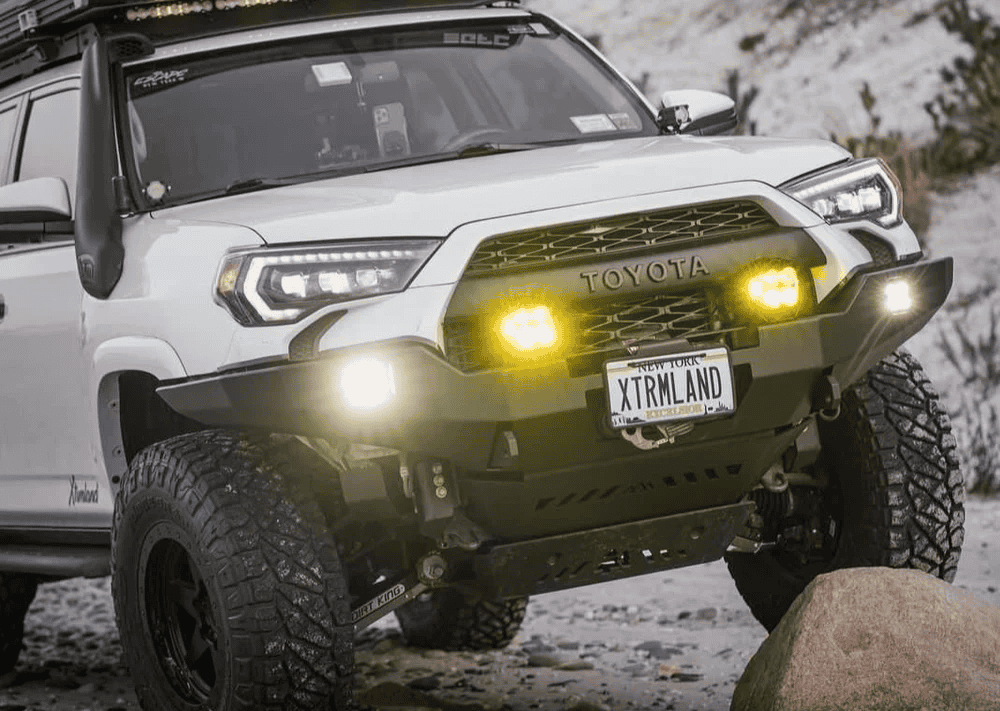Overland Vehicles

Storyteller overland accessories live at the crossroads of travel and utility. The right mix should sharpen capability without burying you in complexity. Think in systems, not single parts. Storage and cargo control keep weight low and forward, recovery and tire tools match terrain, and power and lighting support camp life while staying efficient on the move. An overland builder treats these parts as a linked ecosystem that protects payload, safety, and range.
Storyteller accessories often start with structure. Interior rails and anchor points allow quick changes between passengers and cargo. Soft storage protects delicate gear while rigid cases handle tools and recovery items. Outside the cabin, racks and ladders must account for roof load ratings and wind drag. High output lighting pairs a wide flood for slow trail speeds with a driving beam for open roads, all aimed to avoid glare and to reduce eye fatigue.
Aluminum and stainless resist corrosion while keeping weight in check. Coated steels are strong for recovery points and bumpers if the finish is maintained. Inside, marine grade fabrics and closed cell foams shrug off moisture, and composite panels prevent warping as temperatures swing.
Keep heavy accessories low and between the axles. A balanced layout limits sway and improves braking. Tie gear to rated anchors, use redundant straps on high mass items, and verify clearances at full suspension compression and steering lock.
Electrical accessories require correct gauge wire, sealed connectors, and properly sized fuses placed as close to the source as possible. Any exterior mount should clear airbags and sensors. Confirm that total modifications remain within the vehicle’s gross weight rating.
Begin with a trip profile. Desert travel prioritizes shade, airflow, and expanded water storage. Mountain routes favor heat, traction aids, and weatherproof layers. Weekend shakedowns help you trim the list before committing to a long expedition, and an overland builder can translate those lessons into permanent, clean installs.
Key categories to map before purchase:
List each accessory, its draw in amps, and estimated daily use. Size batteries for at least two days of autonomy without alternator or solar. Add a cushion for cold weather when lithium output drops and plan for peak loads like an induction cooktop or air compressor.
Use existing grommets when possible, protect runs with loom, and leave slack for service loops. Build a labeled diagram so any future work is fast, clean, and safe.
Do a day trip with the full kit. Note what you touched most and what you never used. Move essentials within arm’s reach and eject the clutter that slows you down.
Efficient off grid systems extend range and comfort. A modern dual battery setup with alternator charging handles daily loads while solar maintains a top off at camp. A compact inverter supports outlets for laptops and small appliances, and dedicated DC circuits keep core gear efficient. Ventilation matters as much as cooling, so pair a roof fan with shade to keep interior temps manageable.
Water planning blends storage, filtration, and safe handling. A two tank approach allows you to carry both potable and utility water, while a quick connect line feeds a spray-down or galley. Insulate lines that pass near exterior skins and secure tanks low to protect handling. For cold trips, a diesel or gas fired air heater provides steady, dry heat with minimal battery draw, and a compact hot water unit turns a quick rinse into an actual shower.
Select lighting with replaceable lenses and standardized brackets. Choose mounts that slide or fold when not in use. Favor components with published specs, service docs, and available parts for the long haul.
Roof real estate disappears quickly. Prioritize solar and a fan, then add storage as weight allows. Evaluate every pound up top because drag and sway compound with speed and crosswinds.
Carry basic spares and the tools to service your specific accessories. Fuses, connectors, tire valve cores, hose clamps, and a small multimeter solve many campsite mysteries.
If you want a cohesive setup rather than a pile of parts, partner with a shop that treats accessories as an integrated system. OZK Customs builds around real trip profiles, from recovery and suspension to power and interior storage, then verifies the layout with a walkthrough before delivery. Explore proven upgrade paths here: Explore overland rigs. Ready for tailored work on your platform: Custom overland upfit. Learn how we work and what to expect: Why choose OZK Customs.
You bring the route and the goals. We turn them into a trusted loadout by pairing storyteller overland accessories with smart wiring, safe mounting, and balanced weight. Our team in Fayetteville builds and tests in house so your first trip feels effortless. Tell us how you travel and we will map the system, install the gear, and send you off ready for wherever the trail bends next.
Your build should feel dialed from day one. Sit down with OZK Customs to plan accessories, power, storage, and safety as a complete system. We engineer, fabricate, and install in house so your rig leaves ready for the miles ahead. Tell us how you travel and we will blueprint the rest.
ADDRESS:
6159 E Huntsville Rd, Fayetteville, AR 72701
PHONE:
(479) 326-9200
EMAIL:
info@ozkvans.com